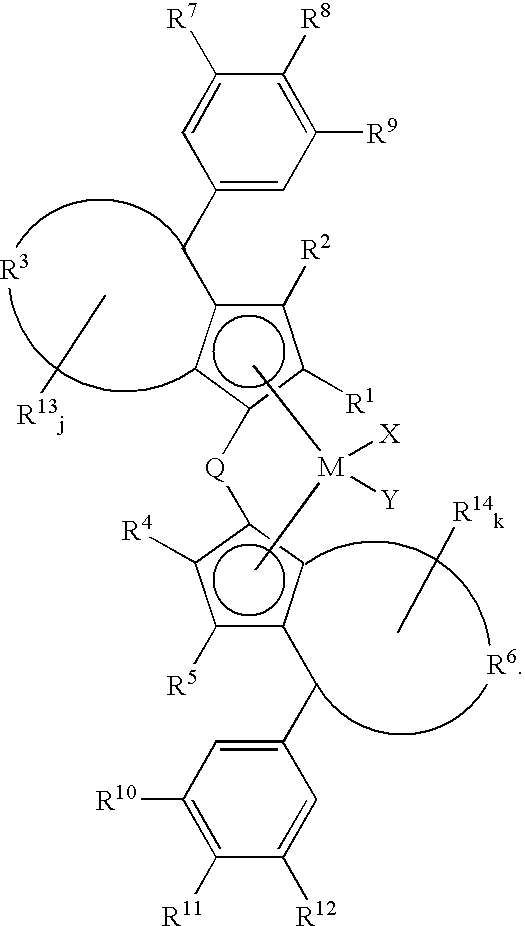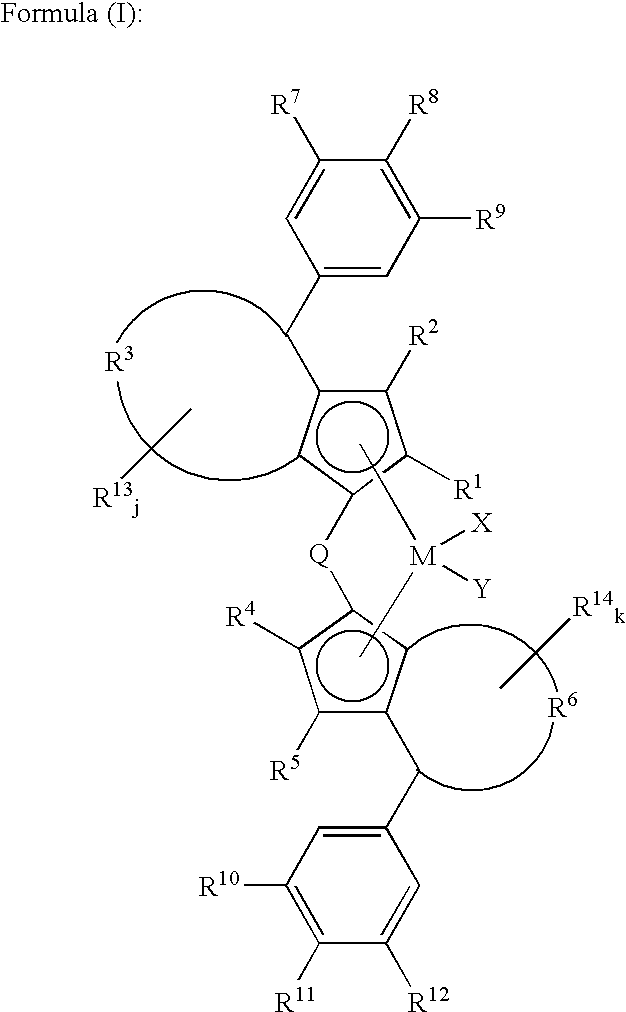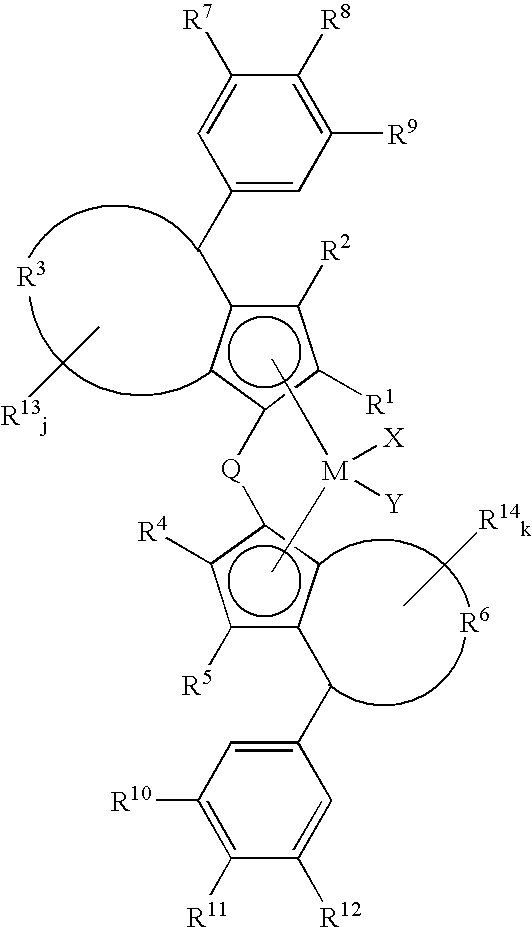Catalyst component for olefin polymerization, catalyst for alpha-olefin polymerization and process for the production of alpha-olefin polymer
a technology of alpha-olefin polymerization and catalyst, which is applied in the direction of catalyst activation/preparation, chemical/physical processes, group 5/15 element organic compounds, etc., can solve the problem of limited disclosure of substituents at the 4-position of azulenyl skeleton, and achieve enhanced polymer stereoregularity, high melting point, and high molecular weight
- Summary
- Abstract
- Description
- Claims
- Application Information
AI Technical Summary
Benefits of technology
Problems solved by technology
Method used
Image
Examples
example-1
(1) Metallocene Complex
(a) Synthesis of dichloro(1,1′-dimethylsilylenebis{2-ethyl-4-(4-trimethylsilyl-3,5-dichlorophenyl)-4H-azulenyl})hafnium.
[0267]2,6-Dichloro-4-bromoaniline (15.6 g, 64.8 mmol) was gradually added to concentrated sulfuric acid (40 ml). The mixture was then stirred at room temperature for 20 minutes. The mixture was then cooled to 0° C. To the mixture was then added gradually sodium nitrite (4.9 g, 71.22 mmol). The mixture was then stirred at a temperature of 0° C. to 5° C. for 2.5 hours. The mixture thus obtained was then added to ice-water (200 g). To the mixture was then added an aqueous solution of potassium iodide (12.9 g, 77.76 mmol) at 5° C. The mixture was then allowed to stand at 5° C. for 15 minutes and at room temperature for 1 hour. The mixture was then extracted with diethyl ether. The extract was washed with an aqueous solution of sodium thiosulfate, and then dried over magnesium sulfate. The solvent was then distilled off. The crude product thus obt...
example-2
(1) Metallocene Complex
[0277]Dichloro(1,1′-dimethylsilylenebis{2-ethyl-4-(4-trimethylsilyl-3,5-dichlorophenyl)-4H-azulenyl})hafnium synthesized at the step (1) of Example-1 was used.
(2) Cocatalyst
[0278]100 g of a commercially available granulating montmorillonite (Benclay SL, produced by MIZUSAWA INDUSTRIAL CHEMICALS, LTD.) was dispersed in 660 ml of an ion-exchanging water having 133 g of magnesium sulfate heptahydrate and 109 g of sulfuric acid dissolved therein. The dispersion was then heated to 100° C. in 2 hours. The dispersion was then kept at the same temperature for 2 hours. Thereafter, the dispersion was allowed to cool to room temperature in 1 hour. The resulting slurry was then filtered to recover a cake. To the cake was then added purified water (3 l) so that it was slurried again. The slurry was then filtered. This procedure was then performed twice. The cake thus recovered was then dried at 110° C. in a nitrogen atmosphere overnight. As a result, 80 g of a chemically-t...
example-3
(1) Metallocene Complex
(a) Synthesis of dichloro(1,1′-silafluorenylbis{2-ethyl-4-(4-trimethylsilyl-3,5-dichlorophenyl)-4H-azulenyl})hafnium.
[0280]To a solution of 4-trimethylsilyl-3,5-dichlorophenyl bromide (2.98 g, 10 mmol) in a mixture of hexane (50 ml) and diisopropyl ether (10 ml) was added dropwise a pentane solution of t-butyl lithium (13.4 ml, 19.9 mmol, 1.48 M) at −70° C. The mixture was then stirred at −10° C. for 1 hour. To the mixture was then added 2-ethyl azulene (1.48 g, 9.5 mmol, 0.95 eq.). The mixture was heated to room temperature where it was then stirred for about 1 hour. To the mixture were then added tetrahydrofuran (20 ml) and N-methylimidazole (20 μl). The mixture was then cooled to 0° C. Subsequently, to the mixture was added a THF solution (5 ml) of silafluorenyl dichloride (1.18 g, 4.7 mmol, 0.47 eq.). The mixture was heated to room temperature where it was then stirred for 2 hours. Thereafter, to the mixture was added water to cause separation. The resulti...
PUM
| Property | Measurement | Unit |
|---|---|---|
| carbon number | aaaaa | aaaaa |
| carbon number | aaaaa | aaaaa |
| carbon number | aaaaa | aaaaa |
Abstract
Description
Claims
Application Information
 Login to View More
Login to View More - R&D
- Intellectual Property
- Life Sciences
- Materials
- Tech Scout
- Unparalleled Data Quality
- Higher Quality Content
- 60% Fewer Hallucinations
Browse by: Latest US Patents, China's latest patents, Technical Efficacy Thesaurus, Application Domain, Technology Topic, Popular Technical Reports.
© 2025 PatSnap. All rights reserved.Legal|Privacy policy|Modern Slavery Act Transparency Statement|Sitemap|About US| Contact US: help@patsnap.com



